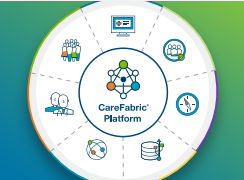From Direct Service Providers (DSPs) to administrative staff, workforce shortages and turnover can prevent your organization from providing the best possible care for the individuals you serve. DSPs require specialized skills, from complex healthcare delivery to key administrative tasks. Training, documentation and onboarding processes are a major investment. How can your IDD organization recruit top talent and reduce turnover?
I sat down with Jonah Cunningham, President & CEO of NACBHDD, and Virginia Gabby, Executive Director of Program Development at Merakey, to discuss how organizations are improving onboarding processes, streamlining recruitment and even using breakthrough technology for IDD workforce management and retention. Want to hear how Merakey and NACBHDD members are addressing the workforce shortage overall, and how IDD organizations can support a sustainable workforce? Read more below.
What is the real state of the IDD workforce?
We’ve all heard about the current workforce crisis, but what does that look like for IDD specifically? I asked Jonah Cunningham, who serves as the head of NACBHDD, for his opinion. NACBHDD is an affiliate of NACo that focuses on both IDD and behavioral health and represents local authorities. Cunningham noted that DSPs “play a critical role in community integration” for individuals with IDD––but at the same time, he noted, there are challenges facing this population. “One recent report from the national core indicators in 2022 showed high turnover rates, where rates varied from state to state from 28.5% on the low end to 59% on the high end.”
Cunningham confirmed that this is part of a nationwide workforce challenge. Every state in the country has reported shortages in home and community-based services––despite most of them increasing their payment rate. Cunningham also alluded to a universal post-pandemic trend in healthcare which has resulted in mass resignations across the board. “There’s a lot of burnout, a lot of exhaustion,” he said.
From a policy perspective, NACBHDD has proposed a Standard Occupational Code for DSPs, who currently have many diverse titles and responsibilities. This would allow for regulations (such as pay or overtime) to be standardized across the profession. Other recommendations from NACBHDD include leveraging technology and investments in recruiting and retention. That’s where Merakey comes in.
Customizing the candidate experience
Merakey is a leading non-profit provider of community-based education and human services. With a 50+ year history, nearly 10,000 employees, and services including addiction treatment, behavioral health, IDD, foster care, veterans’ assistance and aging services––Merakey reaches across 12 states and prides itself on both human and technology innovation.
On the human side, Merakey recently piloted a best practice hiring process, in which applicants were treated with a case management approach. Using our skill set as clinicians and applying those same concepts to an applicant––all the way through hiring and onboarding––just made sense.
“In our business world, we typically strive to standardize our practices,” said Merakey’s Virginia Gabby. “Our assessments, our interviews, a lot of things. In a pilot that I did recently, we did just the opposite. We customized the candidate experience, from time of application through new hire orientation, by using case management principles.”
What does this look like? According to Gabby, the hiring process began with an intake, or pre-screening process, and involved contacting candidates who began but did not complete the application. Hiring managers also conducted a needs assessment with those who showed interest in the job. “This was about what the candidate was looking for, what brought them to apply. We talked about what their goals might be. We really applied person-centered planning to the candidate experience,” Gabby said.
The pilot also included questions about career versus job, what roles the applicant was looking for, and even referring the candidate to other agencies if these positions were not open at Merakey. If you think about it, we’re all struggling with a shortage in the field today, and if you don’t have a position for that person, somebody does. Also, as Gabby pointed out, many of their positions require credentialing and specialized experience; if a candidate is interested, they’ll need somewhere to train first.
The results directly increased recruitment and retention for DSPs. Candidates actually reapplied to Merakey after obtaining pre-requisite experience. Attrition levels dropped, and retention grew, allowing new positions to be created and even more employees hired. In other words, both sustainability and growth increased as a result of Merakey’s approach. Thanks to case management principles like active listening, relationship building, empowerment and career planning, the DSP shortage was reversed and Merakey’s financial position improved.
High touch, high tech
Virginia Gabby’s pilot highlights the importance of human relationships in any workforce situation. But sometimes, the very problem is that humans are scarce––or lack the resources to innovate the way a large organization like Merakey can. Luckily, emerging technologies have shown success in combatting workforce challenges. And even Merakey will tell you their innovation strategy is a mix of human and digital.
Advanced automation is a new category of healthcare technology. It includes emerging innovations like AI, machine learning, natural language processing and robotic processing automation for the purpose of improving organizational health. Since recruitment and retention directly affect your organization’s bottom line, addressing workforce challenges with advanced automation is a savvy strategy.
Let me give an example. One of the major challenges we are seeing in IDD and human services is documentation overload and provider burnout. This affects everyone from DSPs to clinical directors, supervisors and even CEOs. Studies have shown that care providers are spending up to 40% of their work week on clinical documentation––that adds up to about two days a week. It’s not surprising that between 15 and 45% of documentation contains missing or erroneous information (which makes more work for back-office staff when claims get denied), and that 78% of providers have reported burnout.
And the workforce shortage only makes this worse. In the next few years, we expect there to be 15,000 fewer providers in our industry. In all my years as a clinician and technologist, I have never met anyone that said they went into human services because they like documentation.
So how can technology alleviate some of this burden? It’s actually simple: a single platform or electronic health record (EHR) with advanced automation.
Enter Bells AI
Bells AI is the first documentation tool for providers, powered by augmented intelligence. Organizations who use Bells have been shown to cut documentation time by 50%. Average note-writing speed has increased by 67%, and reimbursement submission by 1.5 days.
This is because Bells can do things like create drop-ins or templates, capture scribbles or notes in the moment, use voice-to-text and recommend language for compliance and reimbursement, proof grammar, spelling and clinical vocabulary, fact-check treatment notes, optimize billing codes, and move seamlessly from mobile app to desktop.
The end result is a reduction in errors (cheers from the back office and your CFO), increase in quality, faster and less redundant notetaking, and relief for documentation burnout. Your DSPs and other providers can spend more time providing care, which is why they applied for the job in the first place. Which, in turn, leads to more satisfaction and less stress––and ultimately, fewer DSP resignations and less turnover. And don’t worry––clinicians aren’t afraid AI will take their jobs. In fact, 76% surveyed said automation was not a threat to their job security.
ABA Workflows for IDD
It’s not uncommon for IDD organizations to have a dedicated solution for ABA. As a veteran of this industry, I know that autism diagnoses have skyrocketed in the last 20 years. But thanks to a recent partnership between Netsmart and RethinkFirst, you can integrate ABA workflows directly into your Netsmart EHR. This saves Registered Behavior Technicians’ (RBT) time and improves workforce satisfaction, because the process is intuitive and designed by clinicians for clinicians. In other words, it puts your care team first––whether that’s BCBAs or RBTs/DSPs. As the Merakey pilot showed, people stay in jobs where they feel listened to, empowered, and like they have a career path forward. Our ABA solution takes all this into account.
For example, you can access 1,500 customizable lessons, plans, goals, and embedded video-based trainings directly from your EHR. There’s a 40-hour course for RBT certification, as well as continuing education material. Data collection is easy with real-time graphing and advanced analysis/reporting tools. And with a secure portal for parents and caregivers, it’s never been easier for your care team to communicate with families, caretakers, and guardians.
Putting people first
Technology solutions like our integrated ABA workflows in RethinkFirst, are designed with workforce satisfaction in mind. The same is true for Bells AI, and for Merakey’s pilot recruitment process.
“It’s the relationships that you’re creating,” Gabby concluded. “And it’s the relationships you’re actively creating with staff that you already have.”
“It challenges the idea of competition versus collaboration when it comes to workforce shortages,” agreed Cunningham, adding, “A rising tide lifts all boats.”








